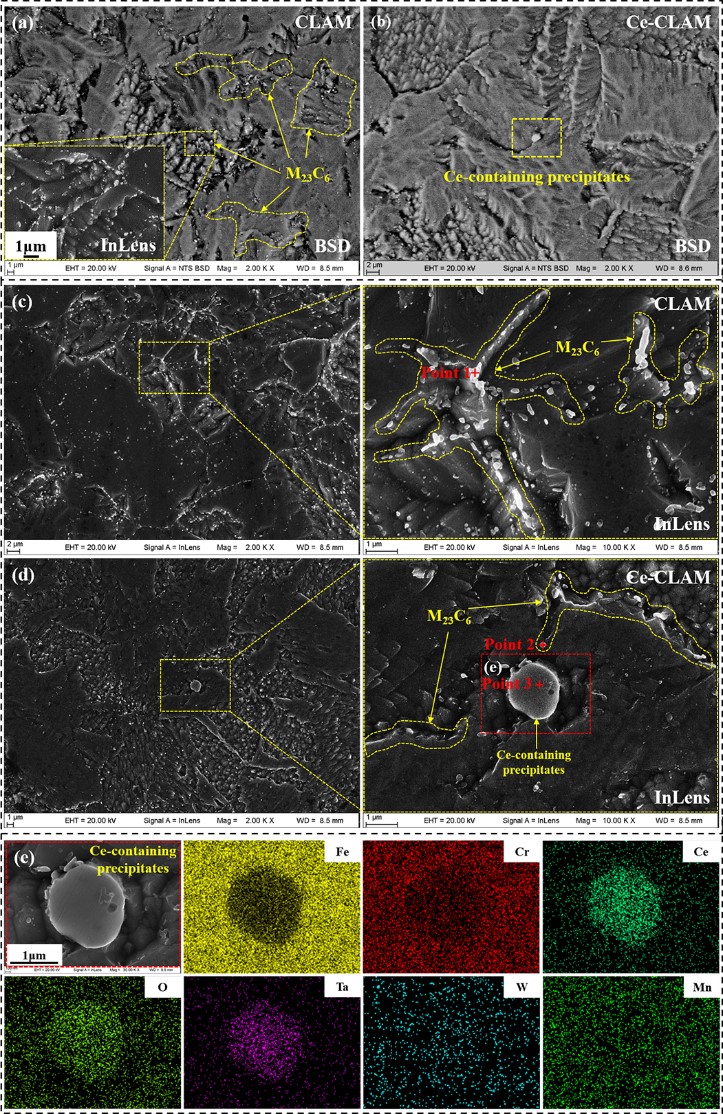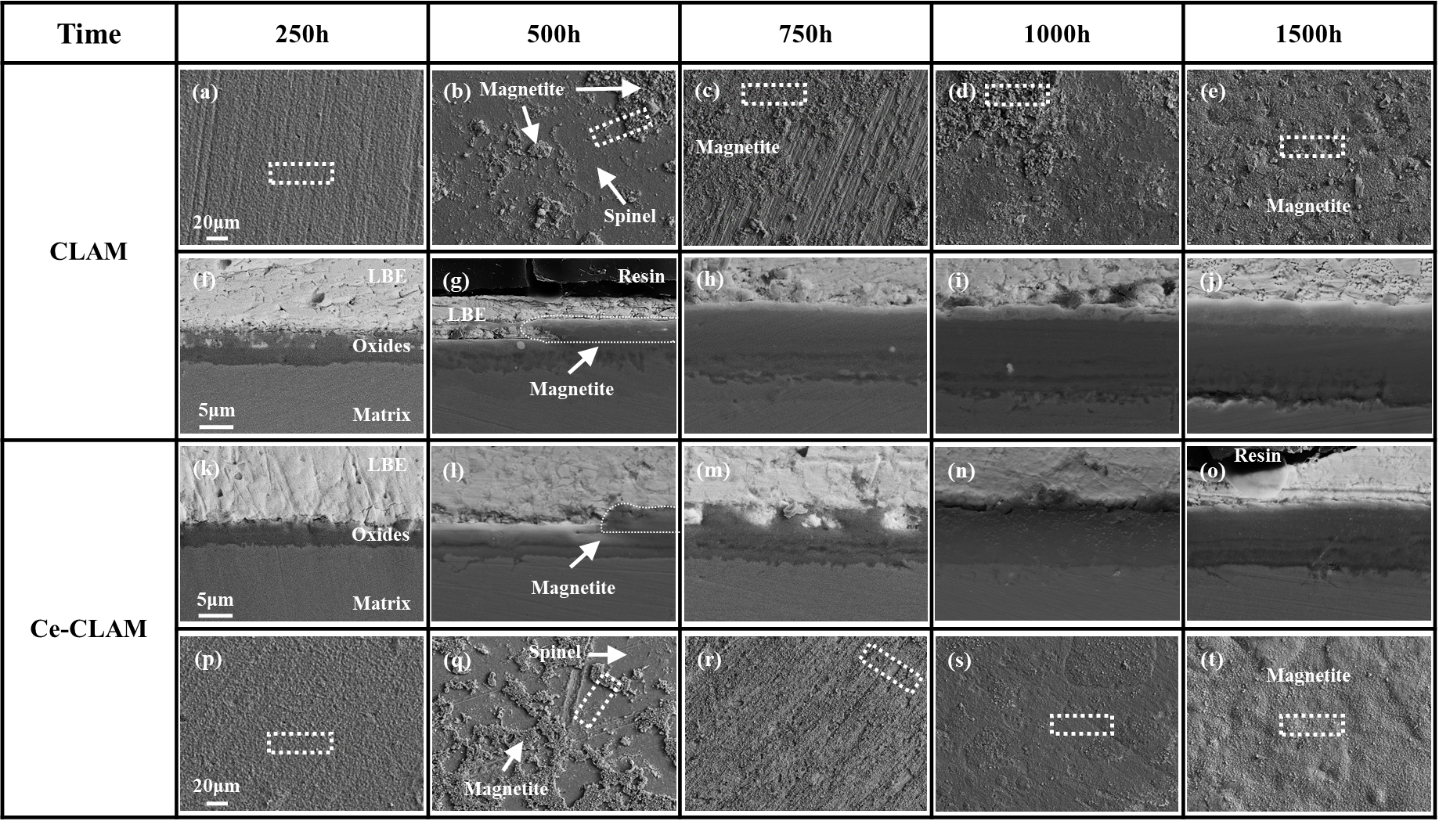According to a recent study published in Corrosion Science, scientists led by Prof. HUANG Qunying's team from the Hefei Institutes of Physical Science of the Chinese Academy of Sciences (CAS) have improved the corrosion resistance of China low activation martensitic (CLAM) steel to lead-bismuth eutectic (LBE) by applying cerium (Ce).
Lead-cooled fast reactor (LFR) with LBE is expected to be widely used as the main coolant in many fields. However, LBE corrosion, together with strong radiation and high temperature, can affect the lifetime of LFR structural materials. Therefore, it is necessary to control the dissolved oxygen concentration in LBE to improve its corrosion resistance.
CLAM steel is a candidate structural material for LFR. Rare earth element Ce tends to segregate at grain boundary and improve the stability of the grain boundary, so its application in steel has been widely studied recent years. However, it is unclear whether it is helpful to improve the LBE corrosion resistance of structural material.
In this study, the research team carried out experimental studies on the corrosion behavior of CLAM and Ce-CLAM specimens in an LBE environment with a dissolved oxygen concentration of 10-6 wt% at 500 ℃.
They found that Ce mainly existed at grain boundaries, which effectively reduced the number of M23C6 and the chromium (Cr)-poor area near grain boundaries, enhancing the stability of grain boundaries.
With the increase of exposure time, the thickness of oxide scale on the surface of the two specimens increased gradually. The growth rate constant kp of oxide scale of Ce-CLAM was about half that of the scale in CLAM, indicating that the addition of minor Ce improves the LBE corrosion resistance of CLAM steel.
On this basis, a mechanism model of Ce enhancing the corrosion resistance of CLAM steel in LBE was proposed.
The results provide experimental data and theoretical reference for the optimal design of LBE corrosion resistance of structural materials.
This work was funded by the National Key R&D Program of China, the Youth Innovation Promotion Association of CAS and the International Partnership Program of CAS.

Fig. 1 Microstructures of CLAM and Ce-CLAM specimens before exposure. (Image by LUO Wenwei)

Fig. 2. Typical surface and cross-sectional morphologies for CLAM and Ce-CLAM after exposure. (Image by LUO Wenwei)

Fig. 3. Mechanism of Ce on corrosion resistance for CLAM steel in LBE. (Image by LUO Wenwei)






